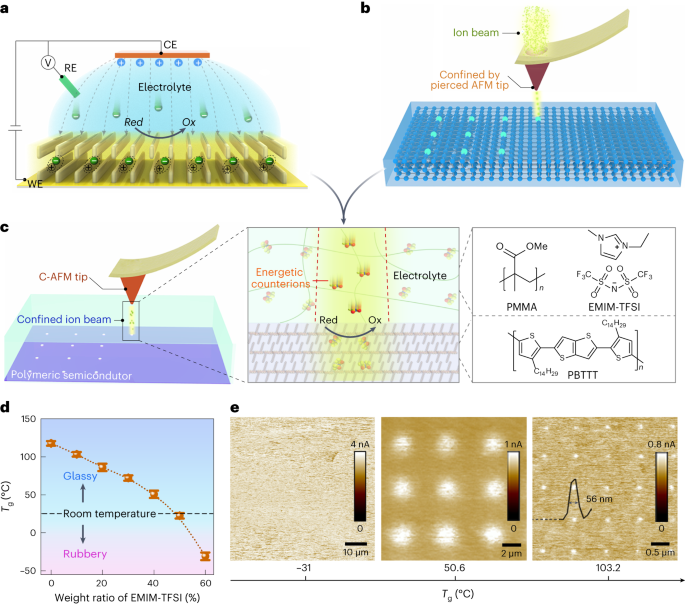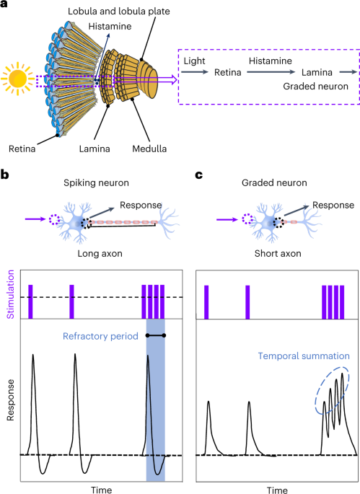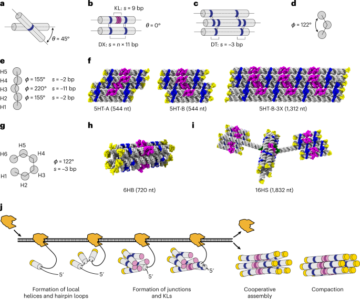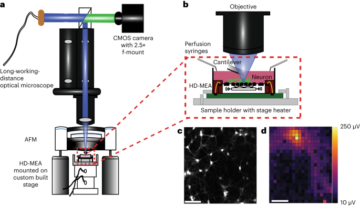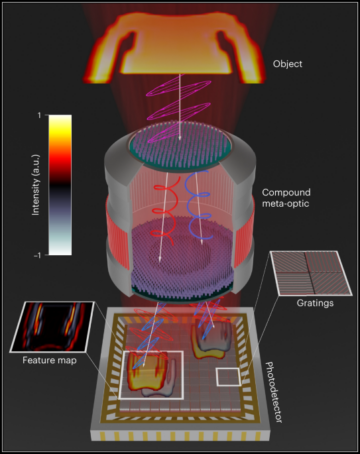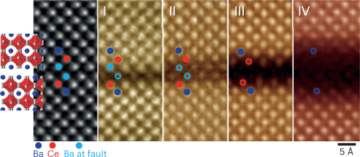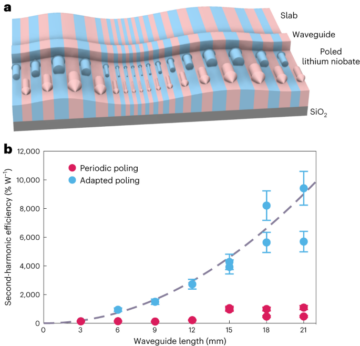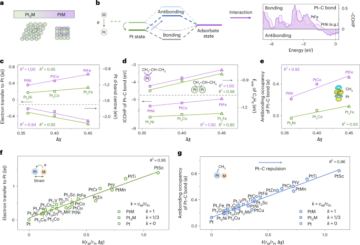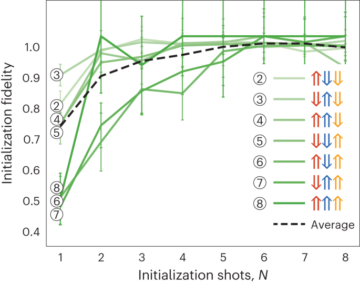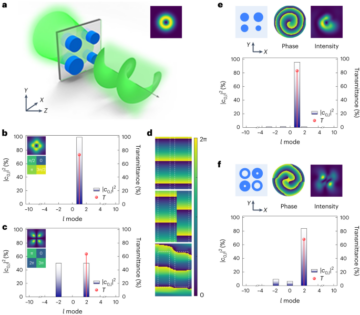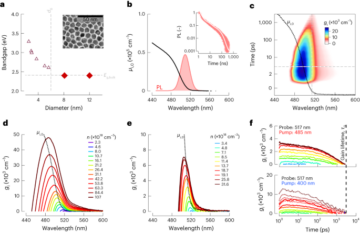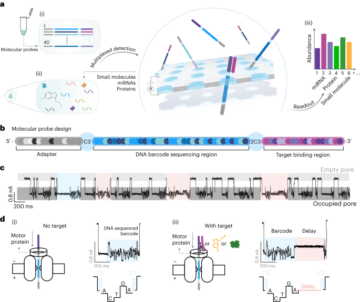Zheng, Y. Q. et al. Monolithic optical microlithography of high-density elastic circuits. Science 373, 88–94 (2021).
Kim, M. J. et al. Completely foldable electronics based on homojunction polymer transistors and logics. Sci. Adv. 7, eabg8169 (2021).
Perevedentsev, A. & Campoy-Quiles, M. Rapid and high-resolution patterning of microstructure and composition in organic semiconductors using ‘molecular gates’. Nat. Commun. 11, 3610 (2020).
WICK, G. L. Ion implantation. Science 170, 425–427 (1970).
Shinada, T., Okamoto, S., Kobayashi, T. & Ohdomari, I. Enhancing semiconductor device performance using ordered dopant arrays. Nature 437, 1128–1131 (2005).
Sviridov, D. V. Chemical aspects of implantation of high-energy ions into polymeric materials. Russ. Chem. Rev. 71, 315–327 (2002).
Moliton, A., Lucas, B., Moreau, C., Friend, R. H. & François, B. Ion implantation in conjugated polymers: mechanisms for generation of charge carriers. Philos. Mag. B 69, 1155–1171 (2006).
Popok, V. Ion implantation of polymers: formation of nanoparticulate materials. Rev. Adv. Mater. Sci. 30, 1–26 (2012).
Jacobs, I. E. et al. Reversible optical control of conjugated polymer solubility with sub-micrometer resolution. ACS Nano 9, 1905 (2015).
Bedolla et al. Reversible doping and photo patterning of polymer nanowires. Adv. Electron. Mater. 6, 2000469 (2020).
Jacobs, I. E. et al. Direct-write optical patterning of P3HT films beyond the diffraction limit. Adv. Mater. 29, 1603221 (2017).
Berggren, M. & Malliaras, G. G. How conducting polymer electrodes operate. Science 364, 233 (2019).
Kawasaki, M. & Iwasa, Y. ‘Cut and stick’ ion gels. Nature 489, 510–511 (2012).
Rivnay, J. et al. Organic electrochemical transistors. Nat. Rev. Mater. 3, 17086 (2018).
Ishiguro, Y., Inagi, S. & Fuchigami, T. Site-controlled application of electric potential on a conducting polymer ‘canvas’. J. Am. Chem. Soc. 134, 4034–4036 (2012).
Borgwarth, K., Rieken, C.Ebling, D. G. & Heinze, J. Surface characterisation and modification by the scanning electrochemical microscope (SECM). Phys. Chem. 99, 1421–1426 (1995).
Bargigia, I., Savagian, L. R., Osterholm, A. M., Reynolds, J. R. & Silva, C. Charge-transfer intermediates in the electrochemical doping mechanism of conjugated polymers. J. Am. Chem. Soc. 143, 294–308 (2021).
Bischak, C. G., Flagg, L. Q. & Ginger, D. S. Ion exchange gels allow organic electrochemical transistor operation with hydrophobic polymers in aqueous solution. Adv. Mater. 32, e2002610 (2020).
Vyazovkin, S. & Dranca, I. Physical stability and relaxation of amorphous indomethacin. J. Phys. Chem. B 109, 18637–18644 (2005).
Aziz, S. B., Woo, T. J., Kadir, M. F. Z. & Ahmed, H. M. A conceptual review on polymer electrolytes and ion transport models. J. Sci. Adv. Mater. Dev. 3, 1–17 (2018).
Zhao, Q., Stalin, S., Zhao, C.-Z. & Archer, L. A. Designing solid-state electrolytes for safe, energy-dense batteries. Nat. Rev. Mater. 5, 229–252 (2020).
Bresser, D., Lyonnard, S., Iojoiu, C., Picard, L. & Passerini, S. Decoupling segmental relaxation and ionic conductivity for lithium-ion polymer electrolytes. Mol. Syst. Des. Eng. 4, 779–792 (2019).
Wang, Y. et al. Decoupling of ionic transport from segmental relaxation in polymer electrolytes. Phys. Rev. Lett. 108, 088303 (2012).
Ratner, M. A. & Shriver, D. F. Ion transport in solvent-free polymers. Chem. Rev. 88, 109–124 (1988).
Andersson Ersman, P. et al. All-printed large-scale integrated circuits based on organic electrochemical transistors. Nat. Commun. 10, 5053 (2019).
Tanaka, H. et al. Thermoelectric properties of a semicrystalline polymer doped beyond the insulator-to-metal transition by electrolyte gating. Sci. Adv. 6, eaay8065 (2020).
Zeiner, C. et al. Atypical self-activation of Ga dopant for Ge nanowire devices. Nano Lett. 11, 3108–3112 (2011).
Kanungo, P. D. et al. Ex situ n and p doping of vertical epitaxial short silicon nanowires by ion implantation. Nanotechnology 20, 165706 (2009).
Wang, G. et al. Seamless lateral graphene p–n junctions formed by selective in situ doping for high-performance photodetectors. Nat. Commun. 9, 5168 (2018).
Utama, M. I. B. et al. A dielectric-defined lateral heterojunction in a monolayer semiconductor. Nat. Electron. 2, 60–65 (2019).
Liu, J. et al. N-type organic thermoelectrics of donor–acceptor copolymers: improved power factor by molecular tailoring of the density of states. Adv. Mater. 30, e1804290 (2018).
Ghasemi, M. et al. A molecular interaction–diffusion framework for predicting organic solar cell stability. Nat. Mater. 20, 525–532 (2021).
Venkateshvaran, D. et al. Approaching disorder-free transport in high-mobility conjugated polymers. Nature 515, 384–388 (2014).
Frisch, M. J. et al. Gaussian 16, revision C.01 (2016).
- SEO Powered Content & PR Distribution. Get Amplified Today.
- PlatoData.Network Vertical Generative Ai. Empower Yourself. Access Here.
- PlatoAiStream. Web3 Intelligence. Knowledge Amplified. Access Here.
- PlatoESG. Carbon, CleanTech, Energy, Environment, Solar, Waste Management. Access Here.
- PlatoHealth. Biotech and Clinical Trials Intelligence. Access Here.
- Source: https://www.nature.com/articles/s41565-024-01653-x
- ][p
- 01
- 1
- 10
- 11
- 12
- 13
- 14
- 15%
- 16
- 17
- 170
- 19
- 1995
- 2%
- 20
- 2005
- 2006
- 2009
- 2011
- 2012
- 2014
- 2015
- 2016
- 2017
- 2018
- 2019
- 2020
- 2021
- 21
- 22
- 23
- 24
- 25
- 26
- 27
- 28
- 29
- 30
- 31
- 32
- 33
- 34
- 375
- 4
- 425
- 5
- 6
- 65
- 7
- 8
- 9
- a
- ahmed
- AL
- allow
- am
- and
- Application
- approaching
- archer
- article
- aspects
- b
- based
- batteries
- Beyond
- by
- carriers
- cell
- central
- charge
- chemical
- circuits
- click
- completely
- composition
- conceptual
- conducting
- conductivity
- control
- density
- designing
- Dev
- device
- Devices
- e
- E&T
- Electric
- electrolyte
- electrolytes
- Electronics
- enhancing
- Ether (ETH)
- exchange
- factor
- films
- For
- formation
- formed
- Framework
- friend
- from
- gating
- ge
- generation
- Graphene
- high-performance
- high-resolution
- How
- http
- HTTPS
- i
- improved
- in
- integrated
- into
- Ionic
- large-scale
- LIMIT
- LINK
- Mag
- materials
- mechanism
- mechanisms
- Microscope
- models
- molecular
- Monolithic
- nanotechnology
- Nature
- NIH
- of
- on
- operate
- operation
- optical
- organic
- performance
- photo
- physical
- plato
- Plato Data Intelligence
- PlatoData
- polymer
- Polymers
- potential
- power
- predicting
- properties
- R
- rapid
- reference
- relaxation
- Resolution
- reversible
- review
- s
- safe
- scanning
- Scholar
- SCI
- seamless
- selective
- semiconductor
- Semiconductors
- Short
- Silicon
- silva
- solar
- solution
- Stability
- States
- Surface
- T
- tailoring
- The
- transition
- transport
- using
- vertical
- with
- Woo
- zephyrnet
- Zhao

